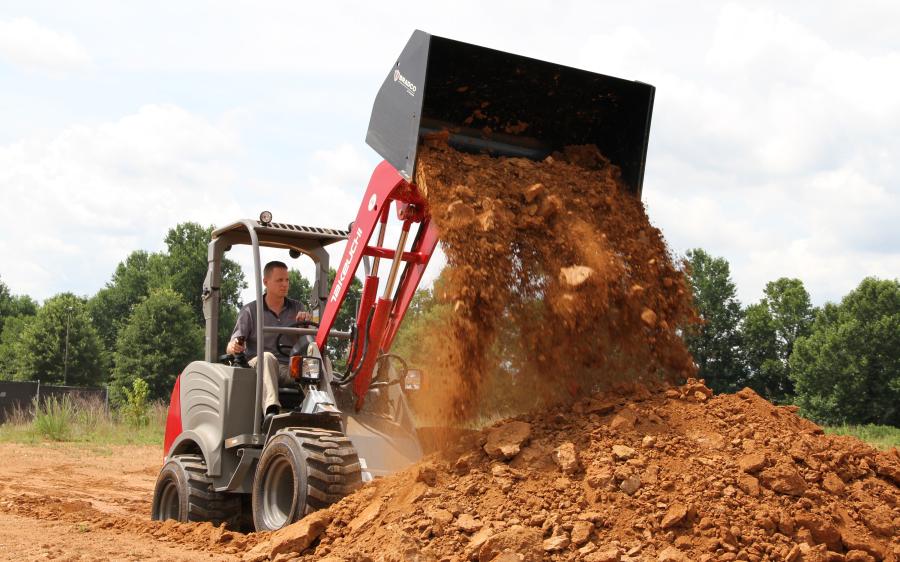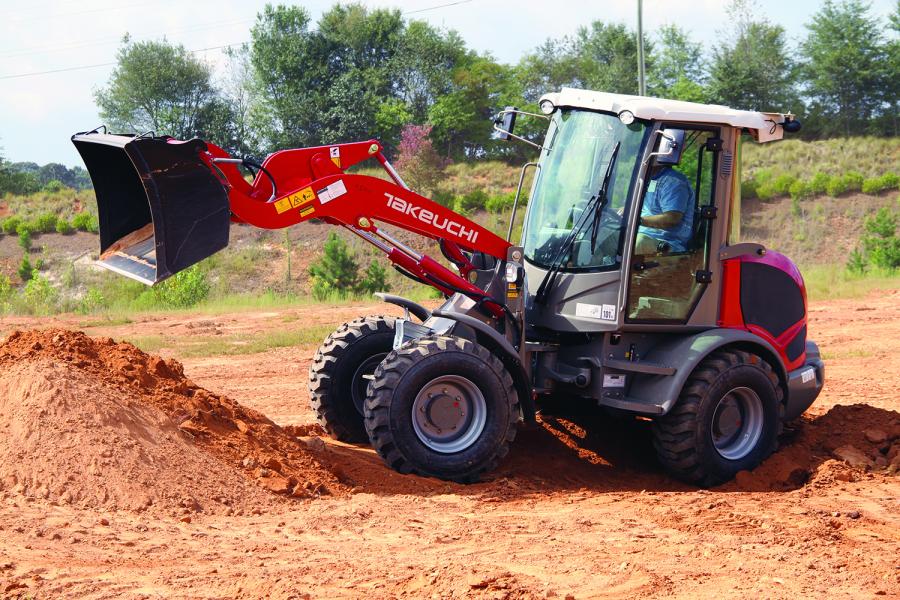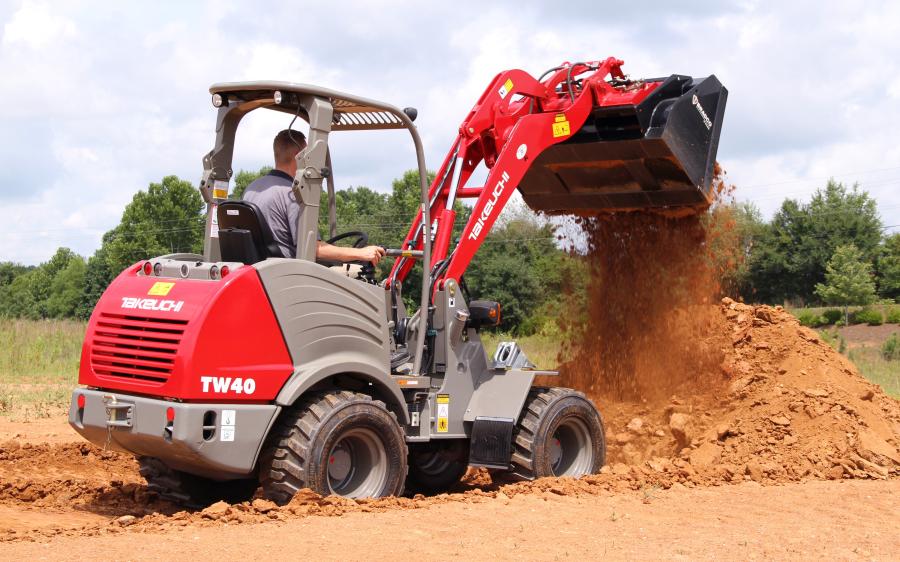When it comes to maintenance, the best place for information is the operator’s or service manual. Having a good understanding of proper operating and maintenance practices will play a key role in keeping a CWL in peak operating condition for many years to come.
With many attachment options, compact wheel loaders (CWLs) play a pivotal role in jobsite applications ranging from snow removal to street cleaning. These versatile and durable machines are easy to maintain, but a proactive approach can make the difference between a productive day at work and an expensive visit to the dealer.
Protecting the longevity of a CWL starts up front. Key considerations include everything from daily inspections to 3,000-hour checks. Here is a look at how to thoroughly take care of a CWL, in addition to some common mistakes to watch out for.
Daily To-Dos
Prior to starting the machine, do a quick visual check of the CWL, including these items:
- Make sure the machine is free from debris in vital areas like the radiator, AC condenser and exhaust. If there is a large accumulation of debris, the operator should use compressed air or high-pressure water to remove the debris prior to operation.
- Search for visible oil leaks.
- If applicable, drain the fuel and water separator.
- Look at tire pressure and condition. Punctures or gouges, metal showing or inadequate tread depths are all signs of poor tire condition.
- All vital fluid levels should be checked and refilled if necessary including engine oil, engine coolant, hydraulic oil, fuel and windshield washer fluid.
- See if all driving and warning lights are functional.
Not all engine or machine manufacturers will have low-level warnings, so it is a good practice to perform a visual check often.
If everything checks out okay, it is time to start greasing. All pivot points will need to be greased either prior to starting or ending the shift, depending on operator preference. Greasing also includes the articulation point, which is commonly forgotten.
It is important to clean the grease fitting prior to greasing the joint. Failing to do so will push the accumulated dirt on the fitting into the pin boss. The dirt will contaminate the grease and act like sandpaper inside the pin boss between the bushing and pin, resulting in premature wear.
Final areas to address are all related to the operator's safety. Before climbing into the cab, the operator should clean the mirrors and windows, especially if they used pressured air or water to clean debris. Once in the operator's seat, the final check is to ensure the brakes are functional and the backup alarm is working.
After a little daily preventative maintenance, the operator can get to work.
Weekly Maintenance
Weekly or roughly every 100 hours, the machine should be thoroughly greased at the pivot points, bushing and bearing. Other than additional greasing, maintenance tasks for this interval require a deeper dive than daily tasks do. This includes:
- Check the lug nuts on each tire and tighten to the appropriate torque.
- See if the electrical connections, cables and plugs have any issues.
- Clean and securely attach the battery contacts.
- Make sure there are no blown fuses or loose connections in the fuse panel.
- If dirty, clean the radiator and oil cooler from the inside out with compressed air or high-pressure water. However, tread carefully to avoid damaging anything in the process.
- If necessary, clean and replace the engine air filter. This is especially true for operators working in dusty environments like demolition applications. Do not use high-pressure compressed air to clean the air filter or hit it against anything as this can result in damage.
Hours-Based Service
It is important to log hours while utilizing a CWL. This is because there are some additional tasks to take care of when the machine reaches 250 and 500 hours.
250 Hours
Depending on the manufacturer, the engine oil and fuel filters should be changed every 250 hours. Most engine manufacturers require an initial engine oil change after the break-in period. Following this, oil change intervals are usually 250 to 500 hours.
The oil level in the front and rear axles, power divider and all four planetary drives should be checked. Initial service for the planetary assemblies after the first 250 hours is also recommended.
500 Hours
The oil in the front and rear axles, power divider and all four planetary drives should be changed within the initial 500 hours. Following the initial period, these will only need to be replaced every 1,500 hours.
Lastly, axle breathers should be replaced, in addition to checking battery posts for corrosion and cleaning if necessary.
Your Annual Checkup
The next big service intervals are 1,500 and 3,000 hours. At this point, the oil in the axles and hydraulic system is nearing the end of its service life and should be replaced. Thorough checks of the machine should also be made to ensure there are no loose or worn parts.
1,500 Hours
As mentioned before, the oil in the axles, power divider and planetary drives need to be replaced. Additionally, change the hydraulic oil and service the brake system.
3,000 Hours
Every 3,000 hours, replace the hydraulic oil, air filters and breathers. This is a good time to ensure all bolts and screws are tightened to the proper torque specifications. It is important to look at hydraulic hoses for fatigue, cracking or leaks, and replace them if any of these issues are discovered.
Start Your Engines
Depending on the manufacturer, a diesel engine will likely need maintenance at additional specific hour intervals. Some of this will simply consist of fluid changes, valve train adjustments, and fuel and exhaust system checks.
With a turbo-equipped engine, one operational technique is vital to the health of a CWL: the warm-up and cool down. Allow the engine time to warm up prior to putting the machine under a load, and let it cool down before completely shutting it off. Because the engine is small, it is a common misconception that cold starts and hot shutdowns won't harm it.
Though allowing a Final Tier IV engine to idle continuously can cause regeneration issues, a few minutes to heat up at the beginning and cool down at the end of a shift is harmless and will prevent premature turbo failures or engine damage.
Engine manufacturers will have their own guidelines for service and inspections, so it is important to review the engine service manual for specifics on the best way to maintain your CWL over the course of its lifespan.
Eliminate the Threat of Machine Failure
CWLs are usually breakdown free if maintained properly. Most failures that occur could have been avoided with proper maintenance. Here are a few things to pay special attention to.
Greasing the machine is vital to longevity with the large amount of articulating and pivoting components. The articulation joint is constantly moving and under a lot of stress. To eliminate premature wear of the pins and bushings, the articulated joint needs plenty of grease. Along with this area, the steering cylinders and loader pivot points need adequate grease daily.
Other considerations include operator turnover. An example of something manufacturers commonly see, and this goes for other machines too, is when a CWL is left on the jobsite to load a truck. Different operators will arrive and use the CWL to load the truck themselves with a mindset that either the next person will grease the machine and check the oil or the machine has already been greased and checked over. In the end, the loader goes days without being properly greased or having any of the vital fluid levels checked.
When it comes to maintenance, the best place for information is the operator's or service manual. Having a good understanding of proper operating and maintenance practices will play a key role in keeping a CWL in peak operating condition for many years to come.
Today's top stories
















